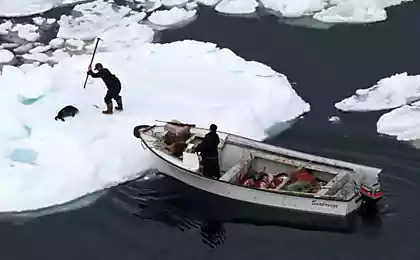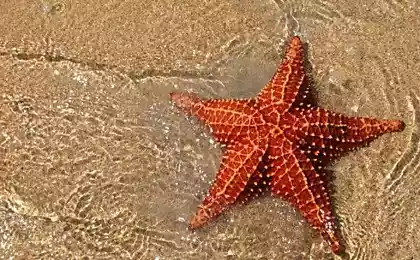253
Marine wind farms alter seal habitat
People are building offshore wind farms to get energy. But marine animals use them as a grocery store. Scientists have for the first time discovered seals and dolphins purposefully examining individual windmills in search of prey.
The researchers discovered this behavior by using GPS to monitor the global positioning system. They tracked the movements of about 200 marine animals, including seals near offshore wind fields in Germany and the UK.
As soon as the seals were on the territory of the wind farm, they began to purposefully explore the supports in search of food, moving from one to another and returning back. About the results of the study reports an article in the journal Current Biology.
Seal routes suggest that the animals knew what they were looking for, rather than just frolic in the water, according to researchers from a team led by Deborah Russell of the University of St Andrews in Scotland. The video shows the animals swiftly sweeping between the towers, slowing down and circling around some turbines. They usually behave this way during feeding.
The scientists also found that some seals search for prey for underwater pipelines, periodically returning to them after a few days.
In addition to searching for food in man-made structures, seals have not abandoned traditional methods of hunting. They fished in the open ocean and looked perfectly healthy.
Although the impact of offshore wind farms on ecosystems has been documented for the first time, this discovery is not surprising. Researchers have long noticed that so-called artificial reefs, including oil rigs and sunken ships, provide new habitats for plants and fish. Appearance then in those places where there is food of predators is only a matter of time.
The study covered only a few dozen seals in a small area of the North Sea, among which a new habit acquired even fewer animals.
But scientists believe that wind farms are actually visited by many more marine predators, as only a small fraction of the general population is labeled with tracking devices. There are about 120,000 seals on the British coast alone.
In addition, scientists suggest that over time, as artificial reefs mature, the trend will increase even more. Both wind farms, which have unusual seal behavior, were built less than 5 years ago.
Researchers are not yet ready to answer the question of whether wind farms in the long term benefit or threaten seals. If a new habitat contributes to an increase in the number of species of victims, it can strengthen the population, while in the case of fish concentration without increasing the number of fish, the consequences can be more complex.
Alexey Norkin by LA Times
Source: facepla.net
How to organize lighting of the suburban area
Scientists have proposed a universal and simple method of determining the cancer























